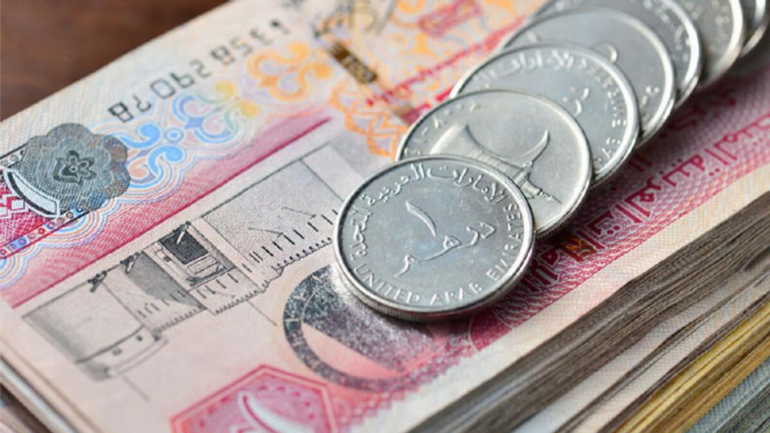Contents
- 1 Annual Leave Entitlement UAE
- 2 New Labour Law Rules of Annual Leave UAE
- 3 Article 29 of the 2021 Federal Decree-Law No. 33
- 4 Calculating leave salary in the UAE in 2023
- 5 Employees rights if they are not paid while on leave
- 6 Annual Leave Policies in the UAE
- 7 Leave entitlement Encashment in UAE
- 8 Carrying forward Annual Leave entitlement UAE
- 9 Accruals of Annual Paid Leave
- 10 Maternity Leave and Parental Leave & Child Care Leave
Annual leave entitlement UAE is the request that the majority of us look forward to. This is the time for us to unwind and re-energize. However, not many of us are aware of the laws governing annual leave in the UAE under the UAE Labour Law. If you are an employee or an employer, you should be aware of the laws governing Annual Leave.
Annual Leave Entitlement UAE
Employees who have worked for at least six months are eligible for annual leave. Employees who have completed one year of service are entitled to 30 days of fully paid annual leave under UAE Labor Law. They are entitled to two days of leave per month if they have completed six months, but not a full year. If an employee leaves their job before exhausting their annual leave, they will be paid for the portion of the previous year that they worked.
Read more: Employment visa UAE
New Labour Law Rules of Annual Leave UAE

The Ministry of Human Resources and Emiratization (MOHRE) has announced the introduction of Federal Decree-Law No. 33 of 2021, which will regulate labor relations and employment practices in the UAE. Article 29 of the new UAE Labor Law, dated February 02, 2022, states the following about the annual leave policy:
During each year of service, the employee must be granted an annual leave that cannot be less than:
- Two days per month for employees with more than six months but less than a year of service.
- Thirty days per year for an employee who has served for more than a year.
Read more: Business Development Dubai
Article 29 of the 2021 Federal Decree-Law No. 33
Article 29 of the New Labour Law on Annual Leave entitlement states:
1. Without prejudice to the worker’s acquired rights for the period preceding the date of implementation of the provisions of this Decree-Law, the worker is entitled to an annual leave with full pay of at least:
- Each year of extended service is worth thirty days.
- If his service term is longer than six months but less than a year, he will receive two days per month.
- If his service is terminated before utilizing his annual leave balance, he will be granted leave for portions of the previous year spent at work.
2. The part-time worker shall be entitled to annual leave based on the actual working hours worked for the employer, and its duration shall be defined in the employment contract in accordance with the Implementing Regulation hereof.
3. The employer may agree to grant the worker a leave from his annual leave balance during the probationary period, while the worker reserves the right to be compensated for the remainder of his annual leave balance if the probationary period is not completed.
4. The worker must take his leave during his entitlement year, and the employer may specify the dates of these leaves based on work requirements and in agreement with the worker, or grant them alternately among the establishment’s workers to ensure the establishment’s work progress. The employer must notify the employee of the specified date for his leave at least one month in advance.
5. With the approval of his employer and in accordance with the applicable regulations at the establishment, the employee may carry forward his annual leave balance or days to the following year.
6. The worker is entitled to his salary during his annual leave.
7. The holidays prescribed by law or by agreement are included in the calculation of the annual leave period if they fall within the worker’s annual leave and form a part of it unless the employment contract or the regulations in effect at the establishment provide for anything more useful to the worker.
8. The employer may not prevent a worker from taking advantage of his accrued annual leave for more than two years, unless the worker wishes to carry it forward or receive a cash allowance for it, in accordance with the regulations in effect at the establishment and the Implementing Regulation hereof.
9. The worker is entitled to a wage for the accumulated leave days if he quits work before using them, regardless of the leave duration, for the period for which he did not obtain his leave. He will also be entitled to a leave wage for parts of the year in proportion to the time he spent working, calculated on the basis of the basic wage.
10. The Implementing Regulation defines the rules and conditions for regulating leaves and compensating for them.
Take a look at: Business Banking in UAE
Calculating leave salary in the UAE in 2023

If you’ve worked for a company for 12 months and taken 30 days of annual leave, your salary during this time will be your full monthly salary. This includes your basic salary as well as any usual allowances.
Read more: Business Loans UAE
Employees rights if they are not paid while on leave
You have the right to file a complaint with the Ministry of Human Resources and Emiratization if your employer does not pay you your full salary during annual leave after you have completed 12 months of service (MOHRE). They will assist you in resolving the issue, and if necessary, the case may be heard in labor court to ensure you receive the proper compensation under the law.
Read more: Business visa UAE
Annual Leave Policies in the UAE
There are Rules for Using Annual Leave entitlement in the UAE, as follows:
- You must use your leaves during the calendar year in which you are entitled to them. Your employer may set your leave dates, but they must notify you at least one month in advance.
- You can carry over unused annual leave to the following year with your employer’s permission, and you’ll be paid for the days you worked during the leave based on your basic salary.
- Employers are not allowed to prevent you from using your accumulated leave for more than two years. If your employment ends, any unused leaves will be calculated solely on the basis of your basic salary.
- Unless your contract or company’s regulations state otherwise, the duration of your annual leave will include official holidays and sick leaves if they occur during your leave period.
If you have any complaints about your annual leave or salary, you can file them on the MOHRE website or call their helpline at 600590000. They are there to assist you in resolving any disagreements with your employer.
Take a look at: Business Advisory Dubai
Leave entitlement Encashment in UAE

According to Article 29(8) of the UAE Labor Law, an employer may not prevent an employee from using accumulated annual leave for more than two years unless the employee chooses to carry it over or receive compensation instead, as specified by the Establishment bylaws and Executive Regulations. Clauses 8 and 9 of Article 29 of the New Labour Law on Annual Leave Entitlement UAE are mentioned above.
Read more: Business banking Dubai UAE
Carrying forward Annual Leave entitlement UAE
Carrying forward annual leaves or receiving cash allowance for them, according to Cabinet Resolution No. 1 of 2022:
- The worker may carry forward no more than half of his annual leave to the following year, or he and his employer may agree on a cash allowance based on his wage at the time of his entitlement to leave.
- If the worker’s service is terminated, he will be paid a cash allowance equal to the basic wage for the remainder of his legally required annual leave.
Always consult the UAE Labor Law and the specific regulations in effect at your workplace for accurate and up-to-date information on annual leave entitlement and rules.
Read more: UAE Industry Trends
Accruals of Annual Paid Leave
Employers must pay their employee’s salaries for annual leave before it is taken. The employer has the authority to determine the start date of the annual leave and, if necessary, to divide it into two or more periods through:
- Unused hours are rolled over and paid out.
- Rule of either use it or lose it.
- Employees may carry forward any unused days of annual leave.
- Payout for PTO at the end of the contract.
- Employees are entitled to be paid for any unused annual leave at the time of termination.
Read more: UAE work visa
Maternity Leave and Parental Leave & Child Care Leave
- Maternity Leave
Employees who have completed one year of continuous service are entitled to 45 days of fully paid leave. Employees who have not completed one year of continuous service are eligible for up to 45 calendar days of half-pay leave. Leave is available both before and after the delivery.
Employees can take up to 100 days of unpaid leave after their paid maternity leave has ended due to a medical condition related to pregnancy or delivery. Employees must provide a medical certificate stating these conditions.
If the employee suffers from a pregnancy-related medical condition, she may take sick leave instead of maternity leave. A medical certificate must be provided by the employee.
- Sick Leave
Employees who have completed at least three consecutive months of service after the probation period are entitled to a maximum of 90 days of sick leave per year.
- The first 15 days of leave are paid in full.
- The following 30 days will be paid in half.
- The following period is unpaid.
After an employee has worked for more than 90 days, the employer may terminate employment, and the employee is entitled to a gratuity.
- Bereavement Leave
There are no provisions in the UAE Labour Law that allow employees to take bereavement leave. In such cases, employees may request that their annual leave be deducted, or they may consider unpaid leave or any other arrangement that the employer would agree to.
Read more: job in uae 2023
How much annual leave do domestic workers get in UAE?
Domestic workers in the UAE are entitled to 30 days of annual leave per year, which increases to 60 days after five years with the same employer.
How many vacation days do you get in UAE?
Employees are entitled to two days of annual leave per month if they have completed six months but not one year of service, and 30 days if they have completed one year of service. Employers must pay their employees’ salaries for annual leave before it is taken.
How many calendar days of paid annual leave are there as per UAE law?
An annual leave is when an employee takes paid time off from work once a year, based on the terms of their employment contract. It is guaranteed in the UAE by Federal Decree-Law No. (33) of 2021, which mandates 30 days off after one year of service.
How is unused annual leave calculated in UAE?
The payment is determined by the basic salary. For more than two years, the employer may not prevent the employee from using his accrued annual leave. Any accrued leaves will be calculated solely on the basis of basic salary upon termination of employment.
Understanding the rules governing annual leave entitlement UAE is essential for both employees and employers. The provisions for annual leave are outlined in the UAE Labor Law, specifically Article 29 of the new Federal Decree-Law No. 33 of 2021. Employees in the UAE are entitled to 30 calendar days of annual leave per year. They can carry over up to half of their annual leave to the following year or receive compensation in lieu of it, subject to the employer’s rules and the UAE Labor Law.













